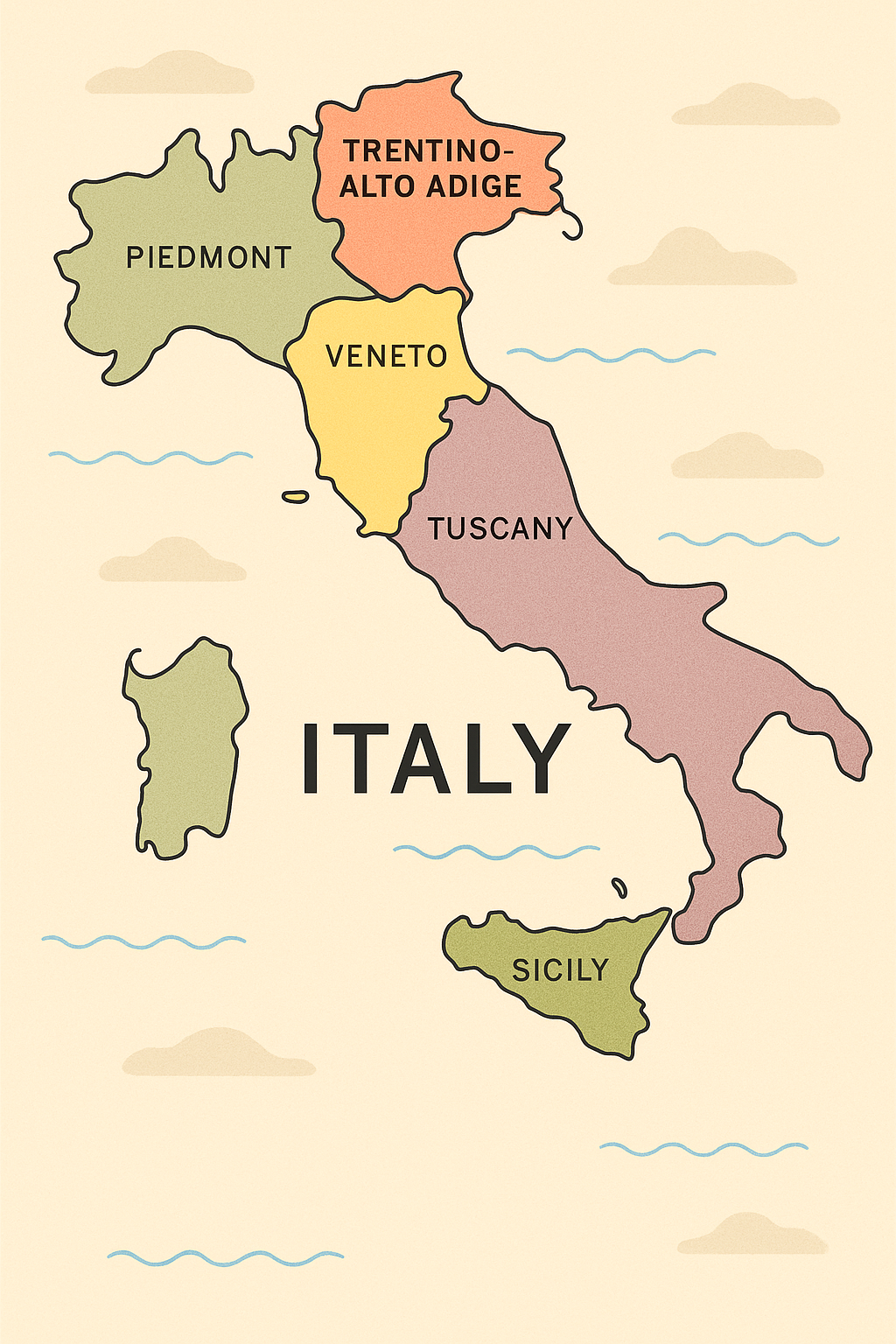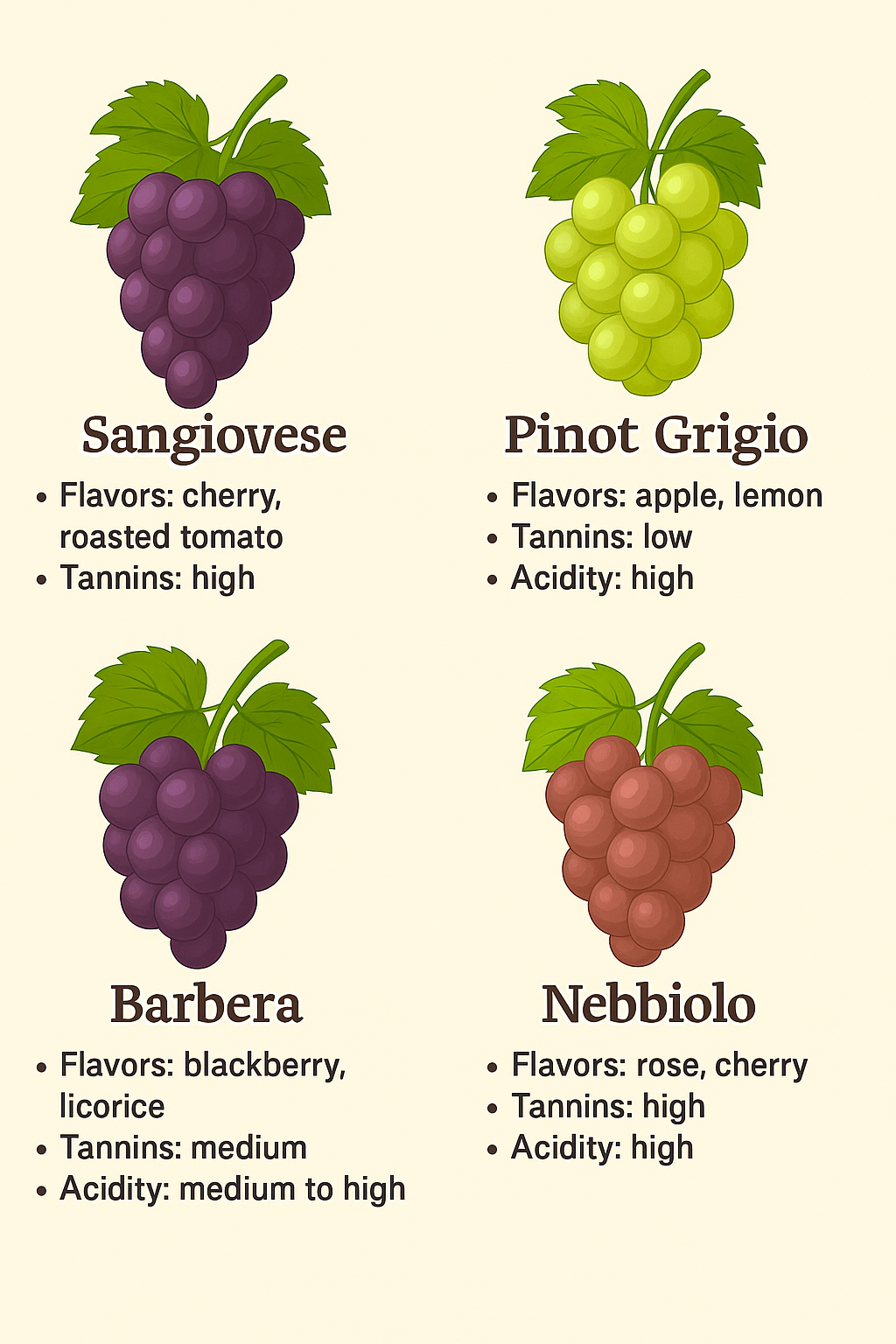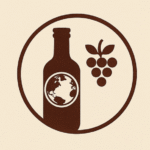Italian Wines

Regions
Italy features big, astringent, tanic, rich food wines.
Italy’s winemaking heritage spans diverse terroirs—from the rolling hills of Tuscany (home to Chianti and Brunello di Montalcino) to the alpine vineyards of Trentino-Alto Adige, the lush northwestern slopes of Piedmont (Barolo, Barbaresco), sun-soaked Veneto (home to Amarone), and the volcanic soils of Sicily and Campania. Southern regions like Puglia and Calabria contribute bold, full-bodied reds.

Varietals
Italy is known for Italian native varietals – namely Sangiovese which makes up Toscana, Brunello, and Chianti, and Nebbiolo which makes up Barbaresco and Barolo.
Reds:
Sangiovese: Italy’s signature red, expressive of terroir with tart cherry, earthy complexity, and savory spice.
Nebbiolo: Late-ripening and tannic, featuring rose, tar, and red fruit—capable of remarkable aging in classics like Barolo and Barbaresco.
Barbera & Dolcetto: Fruit-forward Piedmont reds that offer juicy, approachable styles with vibrant acidity.
Montepulciano & Nero d’Avola: Bold, generous reds from Abruzzo and Sicily, with dark fruit and rustic charm.
Whites:
Pinot Grigio, Verdicchio, Fiano: Coastal whites delivering crisp freshness, stone fruit, and Mediterranean minerality.

History
Italy’s viticultural legacy spans over 4,000 years, rooted in ancient Greek and Roman agriculture. Monastic stewardship in the Middle Ages preserved grape diversity. The 20th century introduced the DOC/DOCG classification system, standardizing regional quality. With a renaissance in indigenous grapes, Italy now combines tradition with modern techniques, producing both heritage-focused and innovative wines.
